How to Know if Your 12 Volt Battery Is Going Bad
If you’ve ever had trouble starting your vehicle or noticed dimming lights, your 12 volt battery might be the culprit. Recognizing the warning signs early can help you avoid being stranded and prevent further electrical issues. In this article, we’ll walk you through all the major indicators that your 12 volt battery could be failing, how to test it, and what to do next. Whether you're driving a car, maintaining a boat, or powering a solar backup, knowing the health of your 12 volt battery is essential.
- Common Signs Your 12 Volt Battery Is Going Bad
- How to Test Your 12 Volt Battery for Signs of Failure
- Understanding the Causes of 12 Volt Battery Failure
- Maintenance Tips to Extend 12 Volt Battery Life
- What to Do If Your 12 Volt Battery Is Bad
- Choosing a Replacement 12 Volt Battery
- Frequently Asked Questions About 12 Volt Battery Failure
- 12 Volt Battery Troubleshooting Checklist
- Final Thoughts on Monitoring Your 12 Volt Battery
Common Signs Your 12 Volt Battery Is Going Bad
Understanding the typical symptoms of a failing 12 volt battery can save you time, money, and stress.
Slow Engine Crank
One of the first signs that your 12 volt battery may be going bad is a slow engine crank. When you turn the key or push the start button and hear a sluggish or dragging sound, that usually points to insufficient power delivery from the battery to the starter motor.
Dimming Headlights and Interior Lights
If your vehicle's headlights or dashboard lights seem dimmer than usual, especially at idle, it could be a sign your 12 volt battery is struggling to maintain voltage.
Electrical Accessories Malfunction
Power windows, radio, dashboard instruments, and even the central locking system may behave erratically when the 12 volt battery is weak.
Clicking Sound When Starting
A rapid clicking noise when trying to start your car is another common symptom. This sound often comes from the starter solenoid trying and failing to engage due to insufficient current.
How to Test Your 12 Volt Battery for Signs of Failure
Diagnosing a bad 12 volt battery doesn't always require professional help. Here’s how you can test it yourself.
Use a Multimeter to Check Voltage
The easiest way to check your 12 volt battery is with a digital multimeter. Set it to DC volts, and place the red probe on the positive terminal and the black probe on the negative terminal.
12.6V or more – Fully charged
12.4V – 12.6V – Adequate charge
12.2V – 12.4V – Low charge
Below 12.2V – Likely failing
Below 11.8V – Bad battery or one that needs replacement
Perform a Load Test
A load test checks how your 12 volt battery performs under stress. You can either use a dedicated battery load tester or take the vehicle to an auto parts store where the test is often offered for free.
Visual Inspection
Look for bulging sides, leaking electrolyte, or corroded terminals. These are strong visual indicators your 12 volt battery is going bad.
>>See also Understanding if lithium batteries are rechargeable
Understanding the Causes of 12 Volt Battery Failure
Knowing why 12 volt batteries go bad helps with prevention and proper maintenance.
Age and Wear
Most 12 volt batteries last between 3 to 5 years. After this period, internal chemical reactions degrade performance even if the battery still seems to hold a charge.
Excessive Heat or Cold
Both high heat and freezing temperatures can shorten the lifespan of a 12 volt battery. Extreme heat accelerates internal corrosion, while cold makes the battery less efficient at producing current.
Parasitic Drains
A parasitic drain occurs when electrical components draw power even when the vehicle is turned off. This can slowly kill your 12 volt battery, especially if the vehicle is unused for several days.
Maintenance Tips to Extend 12 Volt Battery Life
Regular maintenance can add years to the life of your 12 volt battery.
Keep It Charged
Use a trickle charger if you don’t drive often. A fully charged battery reduces the risk of sulfation buildup on the plates.
Clean the Terminals
Corrosion at the terminals can interfere with the connection and reduce efficiency. Clean them with a wire brush and a baking soda solution.
Secure the Battery
Ensure your 12 volt battery is properly mounted to prevent vibrations, which can cause internal damage over time.
Limit Short Trips
Frequent short trips may not allow the alternator enough time to recharge the battery fully. Consider taking longer drives occasionally.
What to Do If Your 12 Volt Battery Is Bad
If you've confirmed your 12 volt battery is indeed going bad, the next step is deciding whether to replace or recharge it.
Recharge if Possible
If your battery is just low on charge and not sulfated, using a smart charger might bring it back to life.
Replace the Battery
If it fails a load test or won’t hold a charge above 12.2V after charging, it’s time for a replacement.
Dispose of the Old Battery Properly
Take your old 12 volt battery to a recycling center or an auto parts store. Most will dispose of it for free when you buy a new one.
Choosing a Replacement 12 Volt Battery
When replacing your 12 volt battery, make sure to select one that matches your vehicle or application needs.
Consider the Battery Group Size
Battery group size affects physical dimensions and terminal positions. Check your owner’s manual or current battery label to find the right fit.
Look for High CCA Rating
CCA (Cold Cranking Amps) indicates how well the battery will perform in cold weather. Higher CCA ratings are better, especially in colder climates.
Warranty and Brand Reputation
Choose a battery brand known for reliability and backed by a solid warranty. A longer warranty usually indicates better quality and peace of mind.
>>See also Are lithium ion batteries allowed on airplanes
Frequently Asked Questions About 12 Volt Battery Failure
How Often Should I Replace My 12 Volt Battery?
Most 12 volt batteries need replacement every 3 to 5 years, depending on usage and maintenance.
Can I Jump-Start a Bad 12 Volt Battery?
Yes, but it’s only a temporary fix. If the battery is truly bad, it will fail again soon.
What’s the Best Way to Store a 12 Volt Battery?
Keep it in a cool, dry place. Use a battery maintainer to keep it charged if it's stored for long periods.
12 Volt Battery Troubleshooting Checklist
|
Symptom |
Possible Cause |
Suggested Action |
|
Slow crank |
Low voltage |
Test and recharge battery |
|
Clicking sound |
Insufficient power |
Check terminals and battery status |
|
Dimming lights |
Weak battery or alternator issue |
Test voltage and alternator output |
|
Corrosion on terminals |
Acid leak or age |
Clean terminals and inspect case |
|
Battery won't hold a charge |
Internal damage or sulfation |
Replace battery |
Final Thoughts on Monitoring Your 12 Volt Battery
Being able to recognize when your 12 volt battery is going bad is critical for maintaining the health of your vehicle or power system. From voltage checks to recognizing physical signs of damage, early detection can save you time and hassle. By taking preventive measures like regular maintenance, correct charging practices, and safe storage, you can significantly extend your 12 volt battery's lifespan and avoid unexpected breakdowns.
Remember, if your 12 volt battery is more than a few years old, or you experience multiple warning signs like dim lights and difficulty starting your engine, it might be time to replace it. Never ignore the early symptoms—they’re your signal to act before getting stranded.









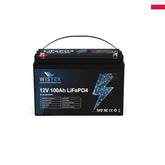
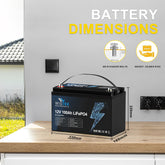
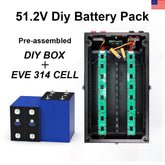


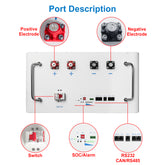
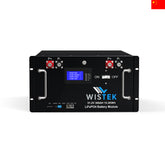
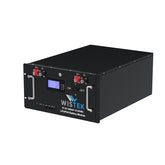


Leave a comment
All blog comments are checked prior to publishing